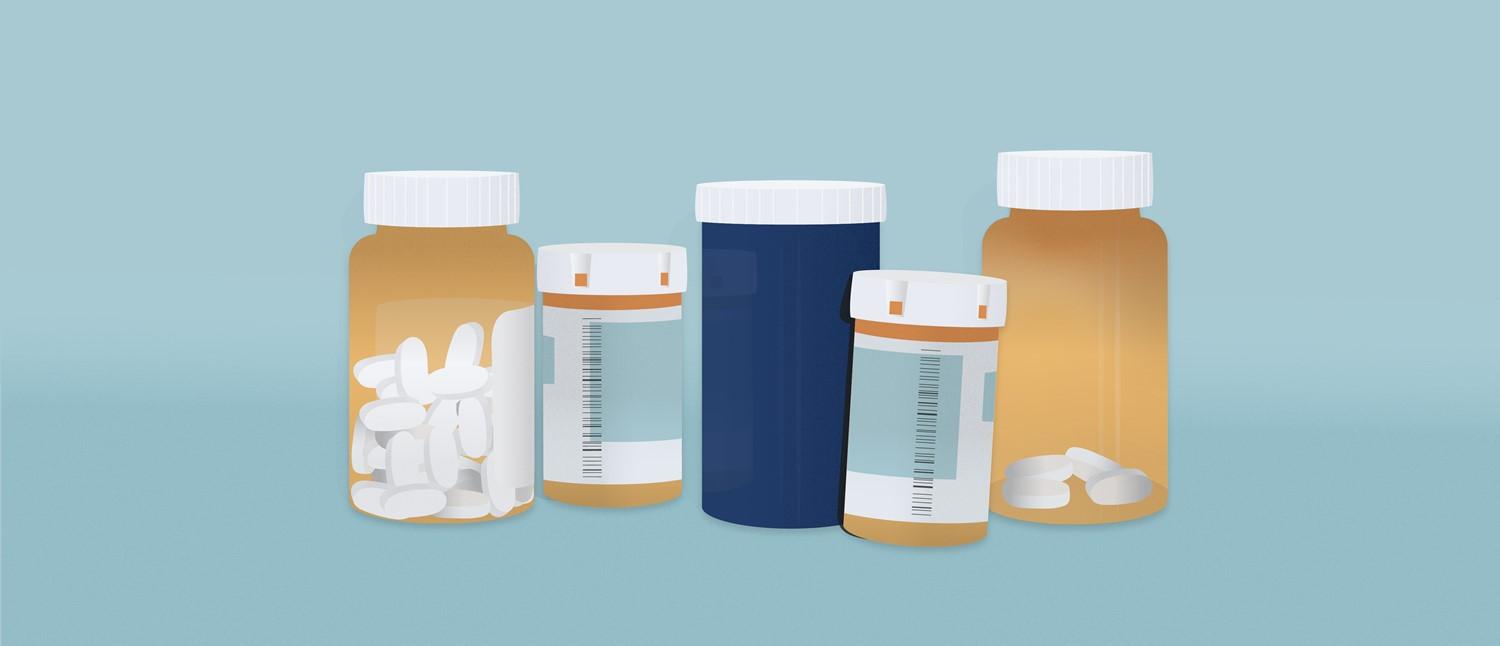
How does paracetamol know where our pain is?
Peer reviewed by Dr Sarah Jarvis MBE, FRCGPLast updated by Emily Jane BashforthLast updated 25 Nov 2021
Meets Patient’s editorial guidelines
- DownloadDownload
- Share
- Language
- Discussion
Paracetamol is a miracle worker for many of us. We take it for headaches, toothache and sickness. It can treat raised temperatures and is also an ingredient in a variety of cold and flu medications. But, how does it work exactly? How can one tablet treat such a variety of problems? Let's explore the science behind the wonder that is paracetamol.
In this article:
In the UK, an estimated 6,300 tonnes of paracetamol are sold each year. The drug was first used in 1956, and has been coming to our rescue ever since, becoming a household drug after gaining popularity between the 1960s to 1980s.
Continue reading below
When should you take paracetamol?
Paracetamol is generally used to treat pain and fevers in adults and children. It tends to be best for mild or moderate pain. Other conditions paracetamol can treat include:
The usual dose of paracetamol is one or two 500 mg tablets at a time. You can take paracetamol every four to six hours, or up to four times a day if needed. You can take it before or after eating food. However, you should not take more than four doses in any 24-hour period.
Who shouldn't take paracetamol?
Dr Tom Micklewright stresses the importance of always reading the label and information leaflet before taking any medication - paracetamol is no exception.
Reading up on paracetamol before you take it helps make you aware of any possible side effects and how it will work best for you. If you are unsure, you should consult your GP before taking paracetamol.
"Taking paracetamol is safe for most people. It is usually one of the first treatments prescribed, since it is suitable for the majority. Paracetamol is fine for those who are pregnant or breastfeeding. However, some people need to be more cautious when taking paracetamol and should consult their doctor or pharmacist for advice.
"This is particularly important if you've previously had an allergic reaction to it, have liver problems, take medication for epilepsy or tuberculosis, are on warfarin, regularly consume large amounts of alcohol or take other medications," says Dr Micklewright.
Continue reading below
Are there different types of paracetamol?
You can buy paracetamol at a relatively low cost over the counter at your pharmacy or in most supermarkets. We often don't think of there being different types of paracetamol, but it comes in different forms. You can buy most of them, but some are only available on prescription.
The different types of paracetamol
Tablets.
Liquids - usually for children.
Capsules.
Suppositories - these are inserted into the back passage.
Soluble tablets - these dissolve in water so you can drink them.
Injections into a vein - these are normally used in hospitals only.
But how does it work?
Amazingly, we still don't know precisely how paracetamol works. However, it probably has an effect in several parts of the body, including the site of the pain (such as a sore arm) and in the brain where pain signals are interpreted.
Pain medicines in general are able to block the processes that cause those feelings of pain. These occur when electrical signals travel from the site of pain, up our nerves, to the spinal cord and up to the brain. Paracetamol can disrupt messages in different parts of the brain involved in processing pain.
It also appears to inhibit the action of chemicals called prostaglandins, which are released when cells in our bodies are injured. Some or our nerves have specialised pain receptors called nociceptors. These are very sensitive to prostaglandin - so by damping down the effect of prostaglandin, our brains aren't alert to the pain in the same way. In addition, paracetamol has an impact on prostaglandins in our brains.
The pain signals in our brains are designed to help us, even though pain is unpleasant. Pain signals tell the brain that something is wrong, warning us to react to danger, like removing our hand from a fire. Therefore, while pain hurts in the short term, it can protect us from further injury in the long run.
Dr Micklewright explains how paracetamol also reduces fever by affecting chemical messages in the area of the brain that controls our body temperature. Paracetamol can take up to an hour to get to work in the body.
Continue reading below
Can you take paracetamol with other painkillers?
Dr Micklewright says that some medications, such as co-codamol or solpadeine, contain paracetamol, so it's important not to take these at the same time. If you do, you are at risk of an overdose. However, other painkillers that don't contain paracetamol, such as ibuprofen, aspirin and codeine, are safe to take alongside paracetamol.
Are there side effects to paracetamol?
"When taken correctly it's rare to experience side effects from paracetamol, as it is well-tolerated by the body," assures Dr Micklewright.
You might occasionally experience adverse reactions. Common side effects include nausea, vomiting and constipation.
However, if you notice any unusual side effects after taking paracetamol, call 999 (UK) or go to A&E.
Rare side effects that require immediate medical attention
Red spots on your skin.
Generalised itching.
Bloody or cloudy urine.
Bloody or black stools.
Sharp lower back or side pain.
Unusual bleeding.
Yellow eyes.
Ulcers or white spots in or around your mouth.
What should you do if you have taken too much paracetamol?
"If you have taken more than two extra tablets of paracetamol or more than eight within 24 hours, you might be at risk of dangerous side effects, such as liver damage," says Dr Micklewright.
Symptoms of an overdose
Profuse sweating.
Diarrhoea.
Stomach pain.
Swelling in your stomach.
Loss of appetite.
Nausea or vomiting.
Loss of appetite.
"If you think you may have taken more than the recommended amount, call 111, even if you are feeling well. If you need to go to A&E then it can be helpful to take the packet of paracetamol with you and tell the doctor exactly how much has been taken."
Patient picks for Medicine information

Treatment and medication
Do beta blockers help with anxiety symptoms?
Whether you had sweaty palms before an exam or a racing heart before a driving test, we’ve all experienced the symptoms of anxiety from time to time. These physical reactions can be hard to cope with - especially if you need to perform under pressure - but medication called beta blockers can help provide some relief.
by Lydia Smith

Treatment and medication
Why antibiotics shouldn't be overused
The nights are drawing in, the weather's taken a turn for the worse and unfortunately many of us are battling a seasonal cold or cough. It also means that your local GP surgery is full to burst with concerned patients asking for antibiotics. But they're likely to be disappointed.
by Dr Sarah Jarvis MBE, FRCGP
Continue reading below
Article history
The information on this page is peer reviewed by qualified clinicians.
25 Nov 2021 | Latest version
25 Nov 2021 | Originally published

Ask, share, connect.
Browse discussions, ask questions, and share experiences across hundreds of health topics.

Feeling unwell?
Assess your symptoms online for free
Sign up to the Patient newsletter
Your weekly dose of clear, trustworthy health advice - written to help you feel informed, confident and in control.
By subscribing you accept our Privacy Policy. You can unsubscribe at any time. We never sell your data.